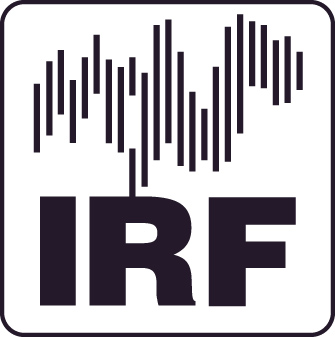

|
| Overview | ||||||
| Topical | ||||||
| Popular Science | ||||||
| Research | ||||||
|
||||||
| Observatory | ||||||
| Data | ||||||
| SEARCH | ||||||
| | ||||||
| IRF Kiruna | ||||||
| IRF Umeå | ||||||
| IRF Uppsala | ||||||
| IRF Lund | ||||||
|
MAP 
|
||||||
|
|
|
DESCARTES is a lightweight instrument for the measurement of long-lived trace gases. The instrument was originally developed by dr Francois Danis at the University of Cambridge. It is designed to fly piggyback on other payloads, with a low weight of about 16 kg and no need for telemetry. The instrument collects samples by letting a measured volume of air pass through a tube containing a Carboxen adsorbent. With the current setup of the instrument and analysis equipment, atmospheric CFC-11, CFC-113, CCl4 and CH3CCl3 are adsorbed in measurable quantities. At present the instrument performance is well known for the measurement of CFC-11. Laboratory tests indicate that reliable estimates of atmospheric levels of CFC-113, CCl4 and CH3CCl3 can be made as well.
One copy of DESCARTES is operated by the University of Cambridge. Another copy is operated by the Swedish Institute of Space Physics. This copy has participated in several campaigns with flights from Kiruna and Andøya.
In a study from 2003, \"Adsorption of CFC on Carboxen during sampling in the stratosphere\" [pdf], the adsorption efficiency at low pressure was investigated by Susanne Roslin. This degree project showed that there are substantial breaktrough of CFCs during sampling at high volumeflows. As part of this a technical test flight was performed 2002-11-25. In this flight the desorption efficiency was tested and no measurements done. Analysed flight profiles will be investigated for samples at high volume flows that will be eliminated.
The Swedish DESCARTES team consisted of:
Results from flights 2000 were presented at The Sixth European Symposium on Stratospheric Ozone Sept 2002 on a poster called Measured tracer profiles from the polar stratosphere covering all seasons 2000 [ps]. Flight profiles from all flights are calculated and available from the THESEO database. The uncertainty of the measurements are under investigation.
A total of 7 succesful DESCARTES flights were made during the ILAS validation campaign. In the first flight during the THESEO campaign the instrument crashed in the Northern sea. The salt water caused considerable damage and the instrument was not operative again until fall 1998. Since then over 27 flights have been made, in the THESEO, SKERRIES, SOLVE and SAMMOA campaigns as well as technical flights arranged by the Esrange Space Center.